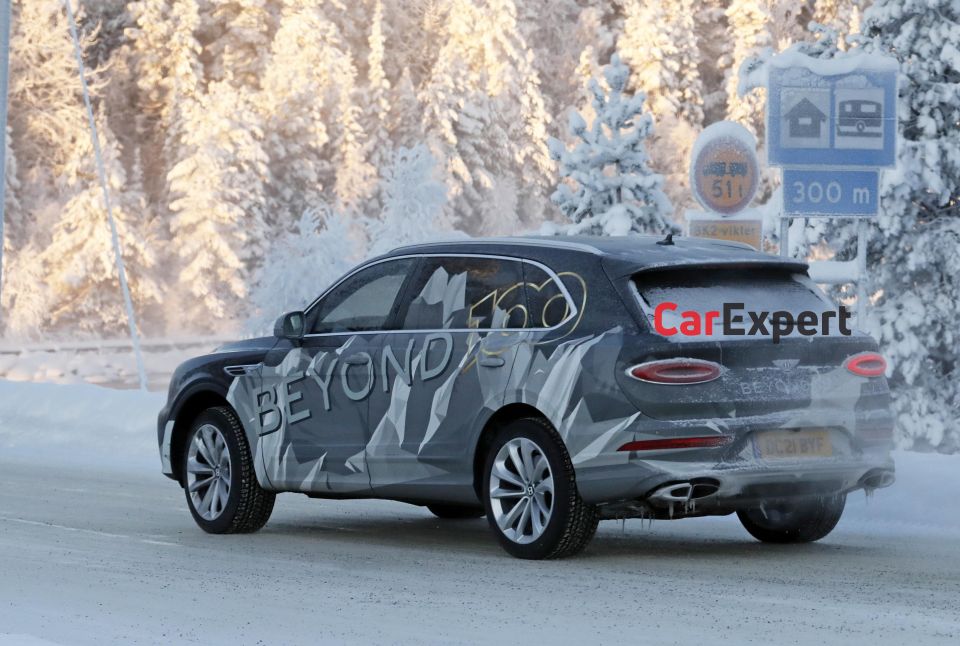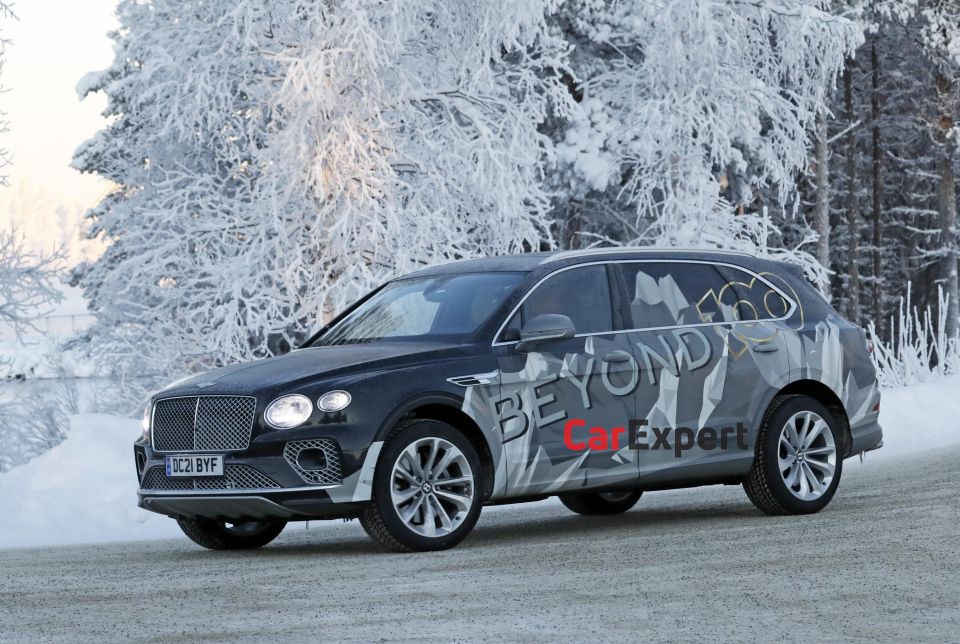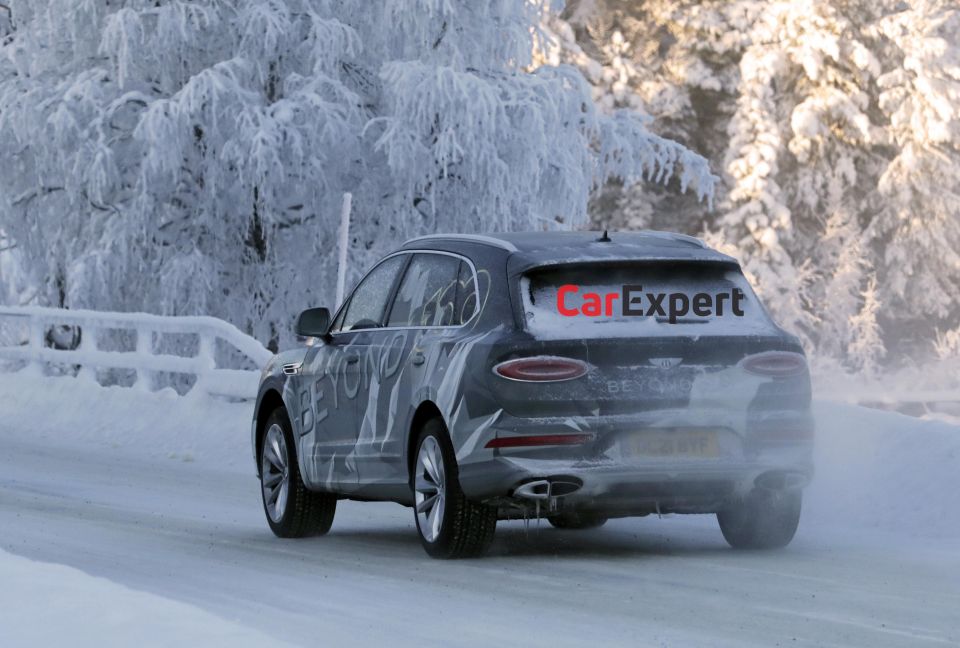

Josh Nevett
2025 Bentley Bentayga review
5 Days Ago

Contributor
If the Bentley Bentayga’s back seat isn’t palatial enough for you, the British luxury brand has something suitable in the works.
A long-wheelbase (LWB) version of the ultra-luxury SUV has been spied testing in the frigid cold of Sweden.
Rumours and countless prototypes have been circulating for more than a year now, but there hasn’t been any official word or reveal yet.
It’s unclear when the long-wheelbase version of the Bentayga will be officially revealed, though a debut sometime in 2022 seems likely.

Pointing out the obvious, this Bentayga LWB prototype has a longer wheelbase that stretches the rear third of the vehicle.
This allows for considerably more leg room for rear passengers, although it’s uncertain exactly how much more space there’ll be.
Compared to the regular Bentayga, the prototype’s rear doors are also considerably longer.
The Bentayga LWB’s main rival will be the long-wheelbase versions of the redesigned Range Rover.

Bentley’s camouflage has ‘Beyond 100’ emblazoned on it, referring to the British automaker’s plan to go all-electric by 2030.
Apart from the wheelbase stretch, this Bentayga prototype appears to be very similar to the current facelifted Bentayga that was revealed in mid-2020.
Expect the Bentayga LWB to feature largely the same powertrain line-up as its short-wheelbase sibling.

Currently, the entry-level Bentayga is available with a 4.0-litre twin-turbocharged petrol V8 that produces 404kW of power and 770Nm of torque.
This engine may sound familiar as it’s shared with its Audi RSQ8, Lamborghini Urus and Porsche Cayenne platform-mates.
There’s also a variant called the Bentayga Speed that’s powered by a 6.0-litre twin-turbocharged petrol W12 that produces 467kW and 900Nm.

More recently, a plug-in hybrid (PHEV) version of the Bentayga has been revealed and confirmed for Australia.
This variant is powered by a 3.0-litre twin-turbocharged petrol V6 mated to a 94kW/350Nm electric motor. Total system outputs are 330kW and 700Nm.
The electric motor is hooked up to a 17.3kWh lithium-ion battery pack, and is said to be good for a range of 51km under the more lenient NEDC standard.

Where expert car reviews meet expert car buying – CarExpert gives you trusted advice, personalised service and real savings on your next new car.
Jack Quick is an automotive journalist based in Melbourne. Jack studied journalism and photography at Deakin University in Burwood, and previously represented the university in dance nationally. In his spare time, he loves to pump Charli XCX and play a bit of Grand Theft Auto. He’s also the proud owner of a blue, manual 2020 Suzuki Jimny.


Josh Nevett
5 Days Ago


Andrew Maclean
4 Days Ago


Shane O'Donoghue
4 Days Ago


Anthony Crawford
3 Days Ago


Matt Campbell
2 Days Ago


James Wong
22 Hours Ago